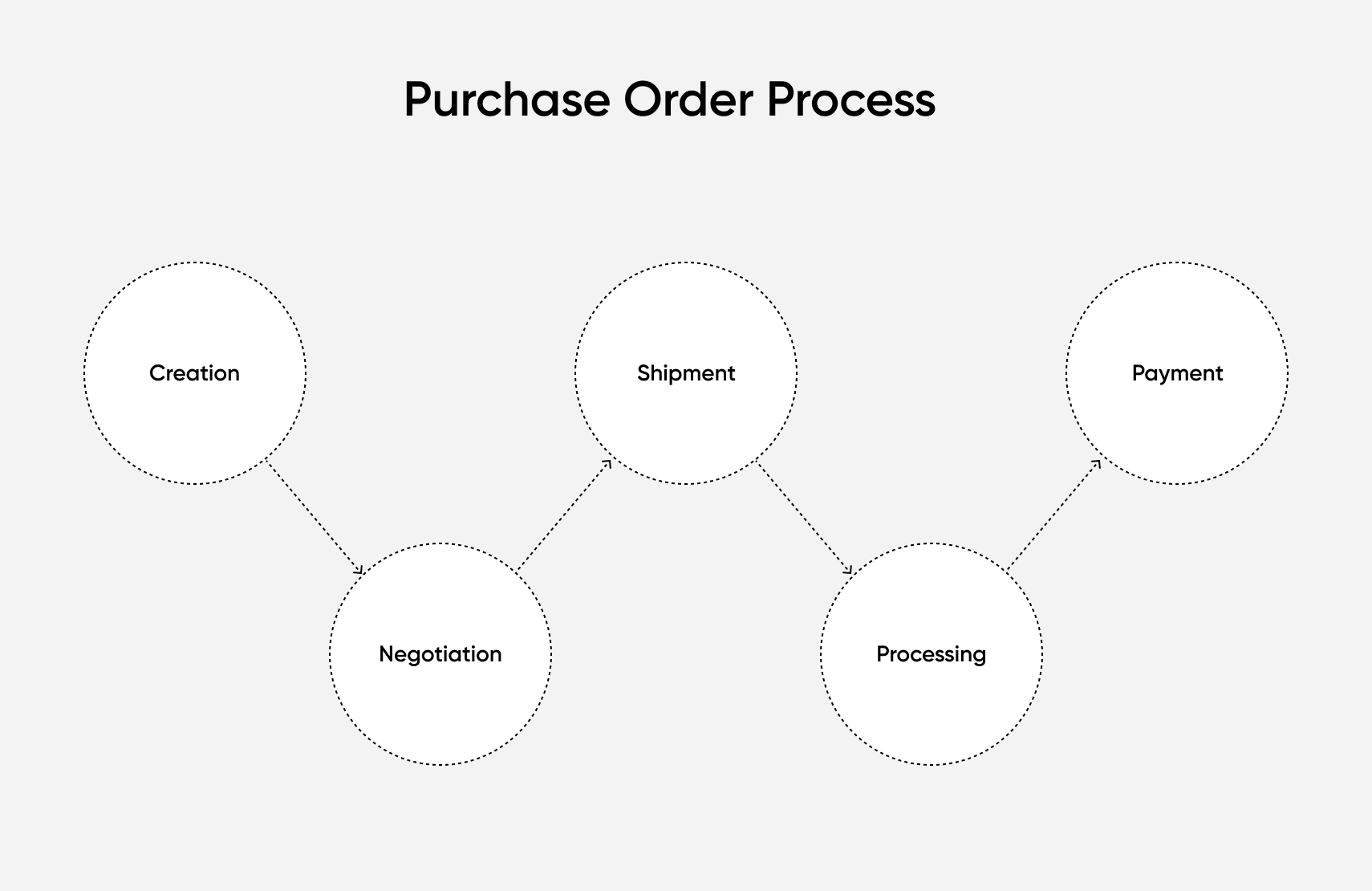What Is Purchase Order Management?

[toc-embed headline=”Purchase Order Management Definition”]
Purchase Order Management Definition
Purchase order management (POM) is an internal procurement process that confirms the validity of every purchase a business makes. Strategic purchase order management aims to ensure all purchase orders (POs) are correct and comprehensive and that all purchases are necessary and optimized for cost.
[toc-embed headline=”Overview of Purchase Order Management”]
Overview of Purchase Order Management
Though purchase order management isn’t a new phenomenon, the increasing adoption of e-commerce technology in the business-to-business (B2B) world has made streamlining purchase and supplier order processes essential for today’s businesses. The B2B purchase order management process has evolved alongside technology with customer portals having the biggest impact. Buyer portals let B2B customers have control over their purchasing processes. As IBM explains, this is one of the key aspects B2B vendors can do to accelerate e-commerce growth.
For buyers, a strategic and continuously-evolving approach to purchase order management is non-negotiable. Strategic POM eliminates the chances of an unnecessary purchase being made as each purchase order is analyzed, assessed, and processed systematically. Using order management software (OMS) to do this makes it less likely for erroneous purchases to occur.
Purchase order management also aims to ensure purchasing capital is being spent optimally. Essentially, this comes down to keeping expenses to a minimum while maximizing the value received in return. It’s also important to make sure you’re ordering the best product for your specific needs. In some cases, this may mean upgrading a requisitioned purchase before sending it out to your supplier.
On the procedural side, a strategic approach to purchase order management can help streamline and optimize each step of the purchase order process. This not only saves money on erroneous or expensive purchases but also saves time and resources.
[toc-embed headline=”How Purchase Order Management Works”]
How Purchase Order Management Works
Strategic purchase order management is comprehensive, as it focuses on optimizing each stage of the purchase order process within the organization.

1. Purchase order creation
The purchase order process begins when a business recognizes the need for a purchase to be made and fills out a purchase order. Strategic purchase order management will utilize an OMS to help. For example, when inventory levels are low or hit a reorder point, an OMS can automatically issue a purchase order. The rise of e-commerce makes an OMS necessary to also:
- Ensure employees have access to purchase orders
- Create comprehensive and accurate purchase orders
- Make the submission of purchase orders quick and easy
2. Purchase order negotiation
After acknowledging the purchase order, suppliers must confirm whether or not they can fulfill the order. This is where suppliers negotiate and make changes. Communication usually occurs via email, which can hurt purchase order management when emails become lost, resulting in delayed communications and late orders. Therefore, it’s important to optimize the negotiation process by ensuring the necessary information is accessible. An OMS ensures that suppliers can access product specs, price ranges, etc., in a single place.
3. Sending a purchase order
After finalizing the purchase order, the supplier ships the products. However, the communication doesn’t end here. In fact, it’s important for supplier order management to let purchase order management know the order is on its way. Similar to how an OMS uses an event-driven architecture to keep customers up-to-date on their orders, supplier order management can utilize a similar technology to send emails in real-time.
4. Processing a purchase order
When receiving orders, purchase order management ties into a number of other internal functions. For quality assurance purposes, it is important to ensure the order is accurate. An OMS can ensure a systematic workflow for assessing incoming orders by storing and organizing the PO in a database. This is much quicker than sorting through a stack of printed POs. By integrating with inventory and warehouse management processes, an OMS lets storage teams know when to expect an incoming delivery.
5. Purchase order payment
Purchase order management aims to minimize time and energy spent on payment-related administrative tasks. This is where an OMS can help. The software supports multiple digital payment options to streamline B2B e-commerce transactions. Furthermore, the software can automate payment processing to prevent any financial penalties. Automating this repetitive task ensures the finance department gets what they need, so the purchase order management team can focus on other responsibilities.
[toc-embed headline=”Key Takeaways”]
Key Takeaways
- Purchase order management is crucial to ensure all stages of the purchasing process go smoothly and that every purchase brings value to the company.
- Purchase order management occurs throughout five stages: creation, negotiation, shipment, processing, and payment of purchase orders.
- With the rise of B2B e-commerce, automating workflows is crucial to eliminate bottlenecks in purchase order management.
- fabric OMS lets B2B e-commerce companies streamline and optimize their approach to purchase and supplier order management by automating workflows.

Tech advocate and writer @ fabric.